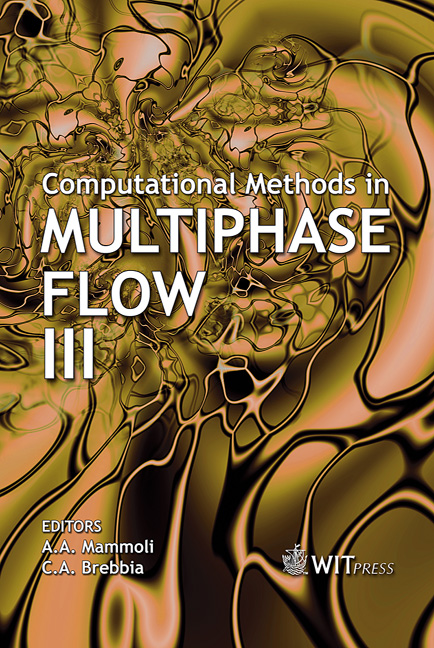A Homogenous Cavitation Transport Model In Turbo Machinery
Price
Free (open access)
Transaction
Volume
50
Pages
10
Published
2005
Size
816 kb
Paper DOI
10.2495/MPF050031
Copyright
WIT Press
Author(s)
I. Biluš, L. Škerget, A. Predin & M. Hriberšek
Abstract
Cavitating flows are complex three-dimensional flows with a phase change in the low-pressure regions. These are very sensitive to bubble formation processes and to velocity/pressure pulsations caused by turbulence. The presented cavitation model derived from a reduced Rayleigh–Plesset equation accounts for some of these effects. The model is based on the additional generic transport equation for the vapour phase. The cavitation influence over the mixture density and viscosity is included in the model, which is implemented in commercial, general purpose CFD code and validated on practical flow examples. Keywords: cavitation, numerical simulation, turbo machinery. 1 Introduction Flow simulation using the numerical method known as Computational Fluid Dynamics has become one of the important topics of attention in cavitating fluid flow investigations. Cavitation is a phase transformation which occurs in fluid systems under certain conditions. If the dynamic alteration of the absolute static pressure reaches or drops below the vapour pressure of the liquid, vapour bubbles are formed inside the fluid and can collapse as they are convected into the higher-pressure regions. Cavitation results in flow continuity disturbance, operating characteristics drop and the appearance of other undesirable effects such as noise, vibration and solid surface erosion. This cavitation phenomenon was first observed when a difficulty arose with a ship’s propellers (the torpedo boat Daring) at the end of the nineteenth century because high speeds could not be reached despite the enlargement of the screw area. In 1910 Sir Charles Pearson built the first tunnel channel, for cavitation phenomenon research [1] and cavitation has been investigated since then.
Keywords
cavitation, numerical simulation, turbo machinery.





